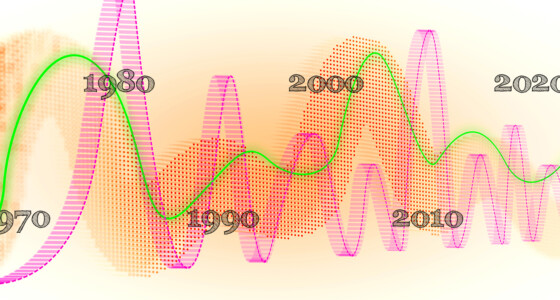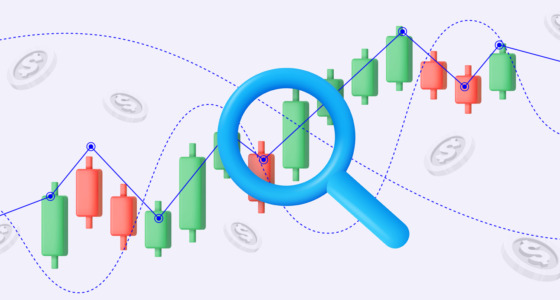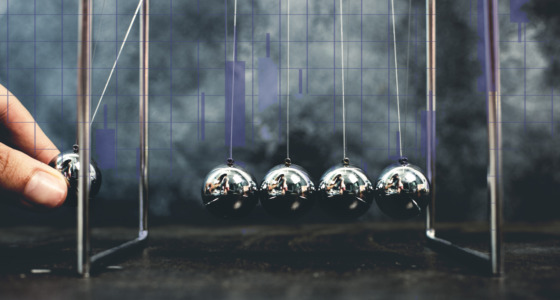

If you have ever examined price charts, you might have noticed that particular assets go through phases of high and low price fluctuations during certain periods within the trading day. This happens because traders enter the market in the morning and leave it at night. Is it possible to trade assets when most traders go to sleep? This article will answer this question.
When the nuclear crisis hit Japan, most American traders were sleeping. At the same time, other traders dumped stocks in General Electric, which made Japanese reactors, and bought ultra-short index ETFs, expecting the economy and other stocks to take a hit.
What is night trading?
You may be confused, as night is not the best time to make important investment decisions. However, the world is so big that when one country sleeps, another is active. Therefore, there are several trading sessions that work in shifts.
The idea of night trading is to trade assets that fluctuate based on the session. This makes it easier to define when the market sleeps and when it’s active.
For example, it’s difficult to determine the most active trading session for gold or oil markets. However, the Australian dollar and New Zealand dollar are most actively traded at the beginning of the Sydney trading session. The Japanese yen will experience large fluctuations when the Tokyo session starts. This happens because people start working, and companies export and import goods in the morning. You can use the periods when these markets sleep to trade with the “night channel” strategy.
Why is night trading beneficial?
Night trading is associated with low liquidity and limited price movements. Although it’s believed that low liquidity leads to losing trades, night traders would argue about this point.
- Trading at night allows traders to make more accurate predictions of the future price direction.
- Another important feature is that little news that could affect a certain “sleeping” asset is published at night. Therefore, there is less market noise.
- Also, the price movements are narrow. Thus, a trader has time to make balanced decisions.
Pitfalls of night trading
A trader should also be ready for potential rewards to be lower than when trading during the active hours. Still, lower rewards will be compensated with lower risks.
Also, it’s vital to determine the assets that will change at least a little while the market is sleeping. Otherwise, there is no point in entering the market. A trader will just waste funds on fees and time on unsuccessful trades.
Tips on how to trade at night

There are several approaches on how to trade at night.
- Constant monitoring. The first way is to monitor market conditions on predefined charts, evaluate released data, and rapidly react to changing market conditions. In this case, a trader opens new trades and closes old ones.
- Accurate strategy. You can evaluate market conditions in advance and set take-profit and stop-loss orders based on your trading strategy. Also, you can implement pending orders that will be triggered only after the price reaches predetermined levels.
- Algo-trading. You can refer to algorithmic trading. This is a computer program that monitors several markets and looks for predefined conditions written in program instructions. This approach can be attractive if you know how to deal with trading algorithms.
To increase the frequency of signals and number of trades, you can use lower timeframes and raise operating funds.
Night strategies
There are several ways to trade at night. The following two consider night trading’s low liquidity and volatility.
1. Range trading
The price isn’t expected to fluctuate at night; it’s supposed to move within ranges. The probability of support and resistance breakouts is minimal. Therefore, you can implement rebound indicators, including Bollinger Bands.
The idea is simple. You should wait for the price to touch one of the bands. The price is anticipated to rebound from it in the opposite direction. Thus, you can open a long trade when the price rebounds from the lower band or a short position when it reverses from the upper band.
You should remember that small price movements are a feature of night trading. Therefore, standard indicator settings won’t work properly. Otherwise, they will provide only delayed signals.
For example, if you use the RSI indicator, you can change overbought/oversold boundaries from 70/30 to 60/40. If the indicator breaks above the 40 level, it’s a sign to open a buy trade. When the index falls below the 60 level, you can open a sell trade.
2. Breakout from the night channel
As it was mentioned above, the price is unlikely to break beyond the support or resistance level. This strategy works after the night session ends. Usually, the night period lasts from 11 pm to 8 am during a certain trading session.
Price movements are expected to increase within the first two hours after the market “wakes up.” The idea of the strategy is to place a buy stop order to open a long trade and a sell stop order to open a short trade.
As the price fluctuates within a channel, you should set the buy stop several pips above the highest point of the channel and the sell stop below the lowest point of the channel.
A false breakout is the pitfall of this approach. A stop-loss order can be on the opposite side of the channel or in the middle of it. A take-profit value should equal the channel’s range.

Example
In this example, we’re looking at EURGBP. You can notice the few blue squares on the chart.
The first one represents the overnight range. A SELL STOP order then got activated after 9 A.M., followed by the opening of a short position. Then, the SL was not activated due to the return movement being unable to hit 50%. If you look at the chart at point TP1, you will see that half of the position made a profit after closing. The position was half closed because there was no confidence in it.
Meanwhile, the second half was still open, but the SL level changed. The SL order then shifted to the entry point. The price went down again following a rebound, reaching the TP 2 level.
Takeaway
Night trading is a tricky strategy. However, if you know how to deal with low liquidity and customize indicators to the night trading strategy, you will be able to succeed. Moreover, the “night channel” trading strategy allows traders to make balanced decisions and accurate forecasts.
Disclaimer: No strategy can guarantee a 100% correct outcome of the trade.









